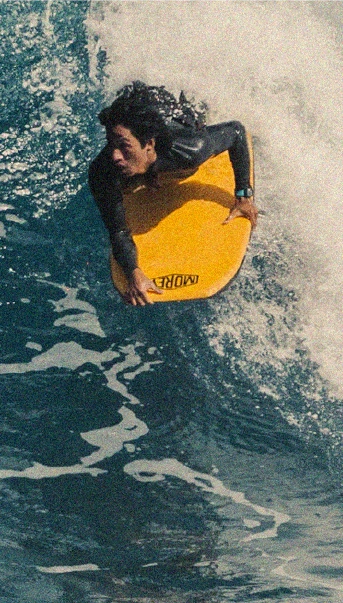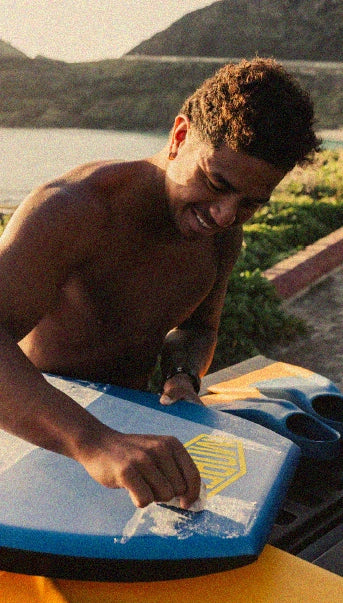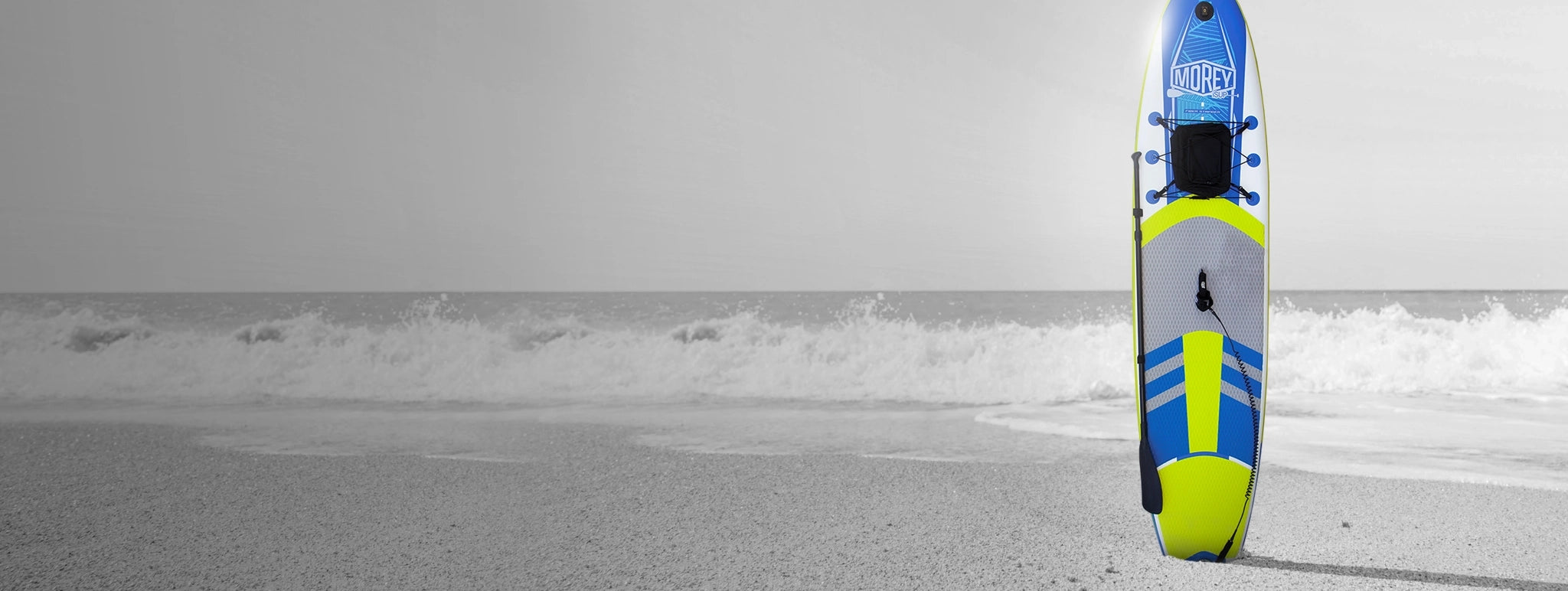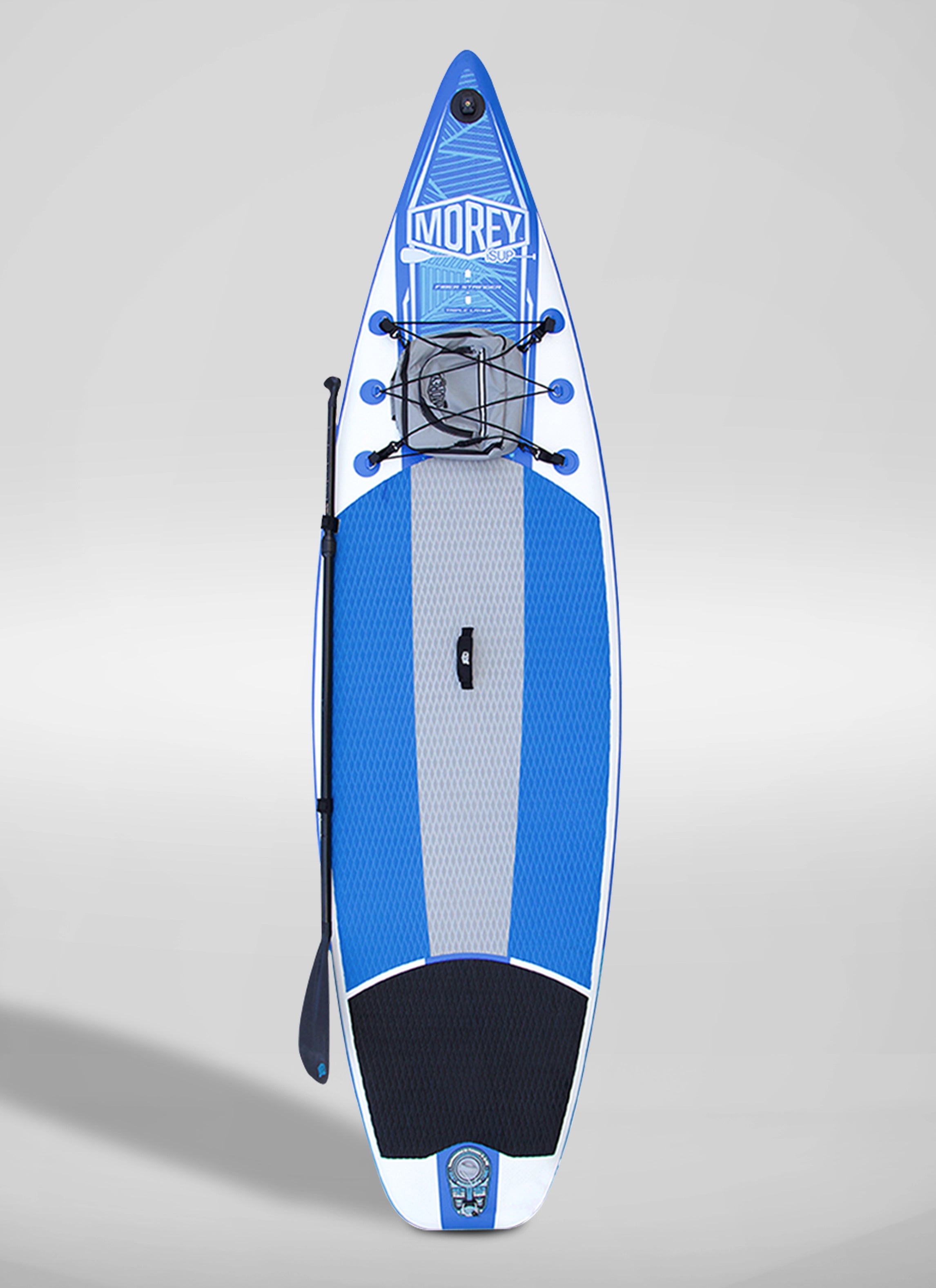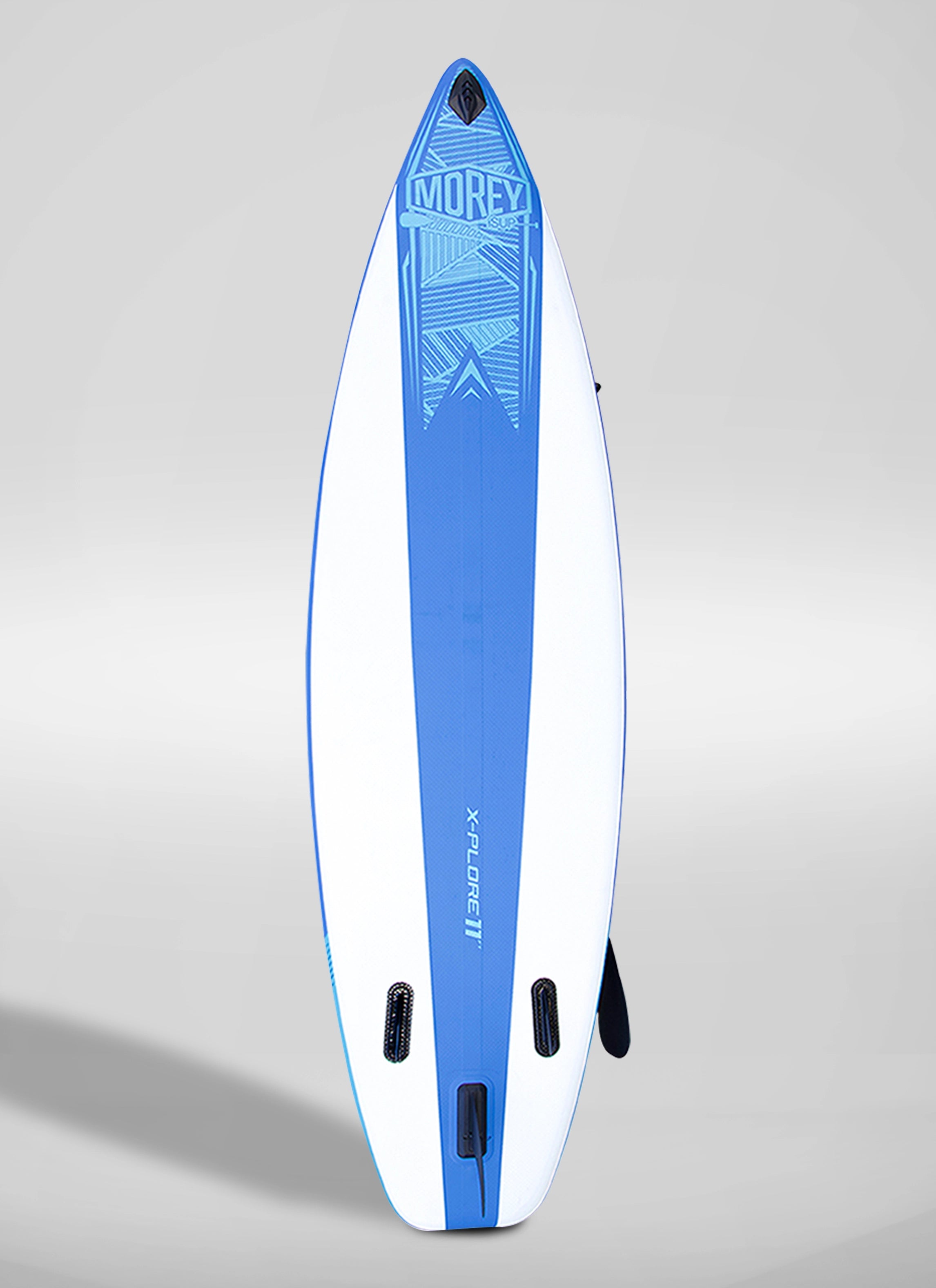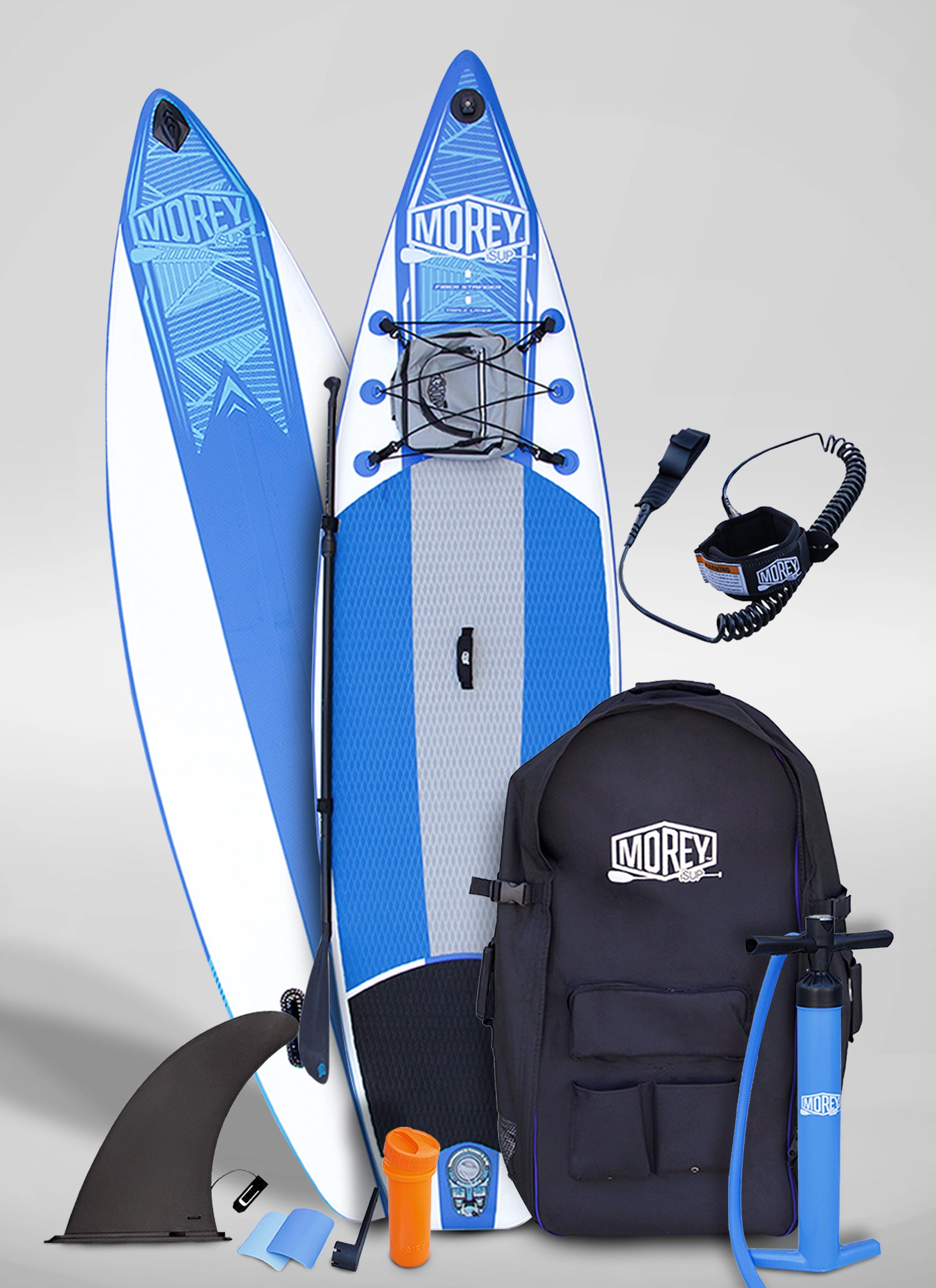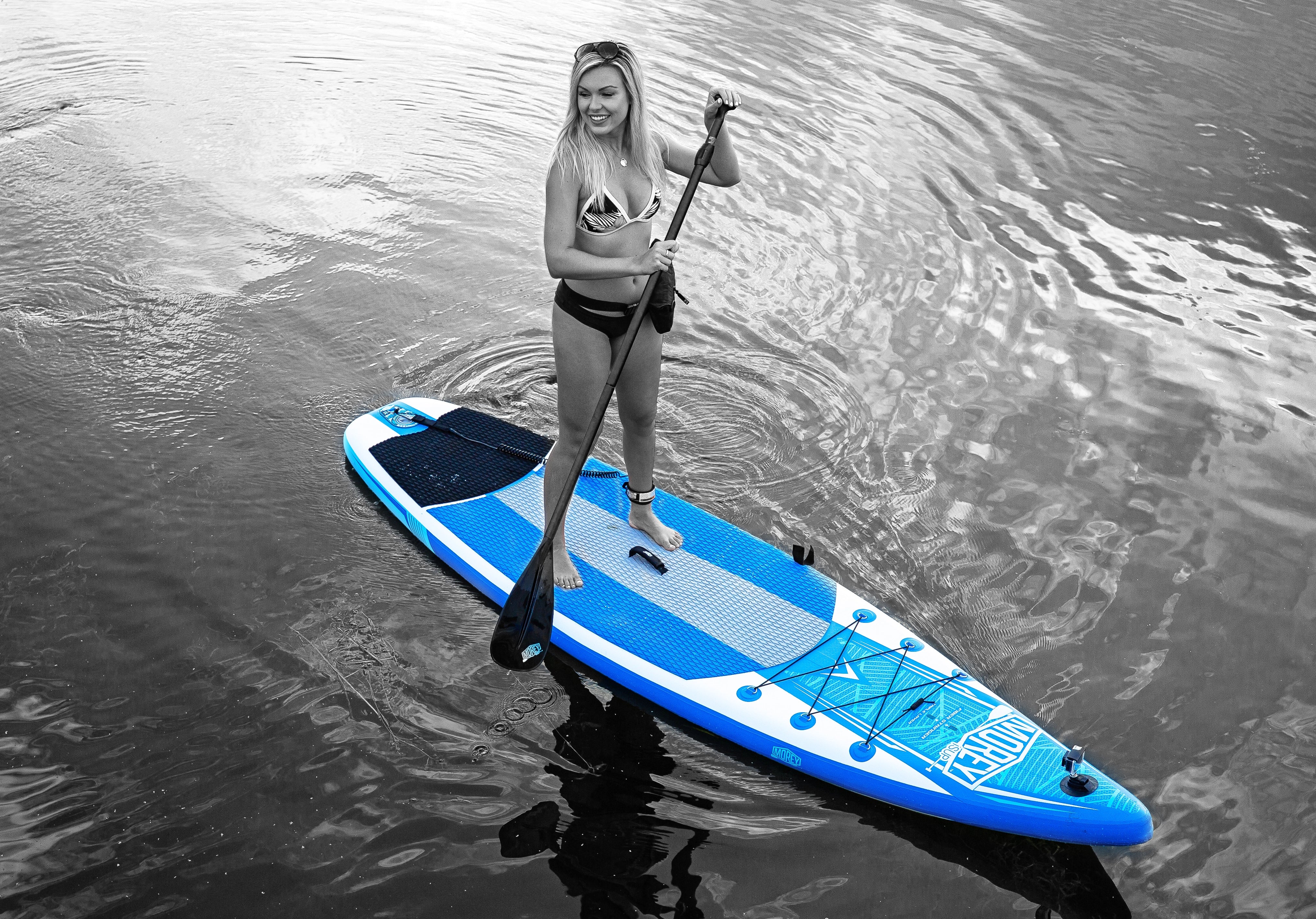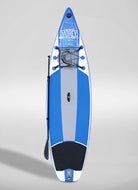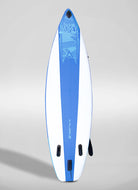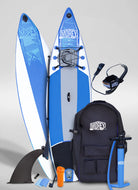11ft. X-PLORE ISUP
About the product
Touring board shape optimised for flatwater, river or open ocean paddling. Pointed nose area to help the board slice through the water smoothly, increase glide and help the board go straight.
- Dimension: 11' (L) x 34" (W) x 5.5" (D)
- Made of heavy duty PVC & built with drop-stitch construction
- Soft EVA traction pad
- Tail D-ring for attaching the ankle leash
- Bungee system for securing gear
- Tri-fin system for enhanced tracking
- Removable center tail fin
- Carry handle for easier transport of the board
- Fiber PVC inner stringer
- Paddle holder loops
- Camera Mount (GoPro compatible)
- Nose Bumper
- Traveling backpack & repair kit included
DESIGN
Triple layer stringer construction made of heavy-duty PVC & built with drop-stitch construction
PORTABILITY
A sturdy handle makes it easy for one person to transport. The Build-in bungee strap for securing gear
STRUCTURE
Reinforced nose bumper
DURABLE
EVA traction desk pad for foot traction Tri-fin system Adjustable Paddle
ACCESSORIES
Strap holder for holding the paddle when not use
Value-added bag included
Other Accessories: High-pressure hand pump with gauge, coil leash, built-in camera mount, repair kit
Swimfin Size Guide:





